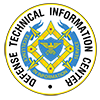Sculpting With Graphene Foam
Rice University scientists have developed a simple way to produce conductive, three-dimensional (3D) objects made of graphene foam. The squishy solids look and feel something like a child’s toy but offer new possibilities for energy storage and flexible electronic sensor applications. The technique detailed in advanced materials is an extension of groundbreaking work by the




